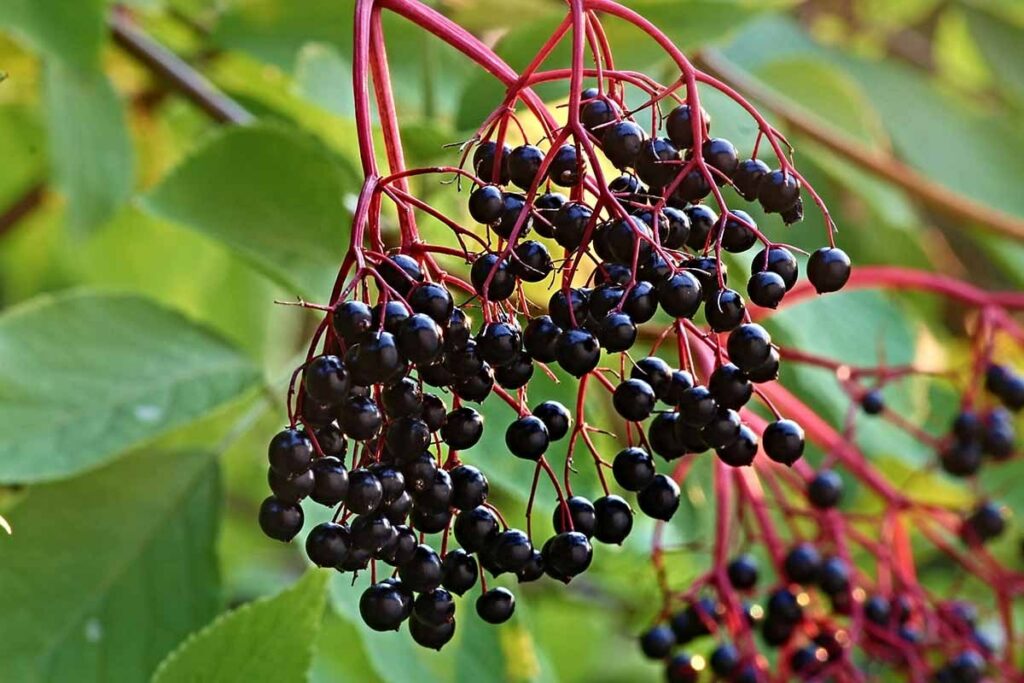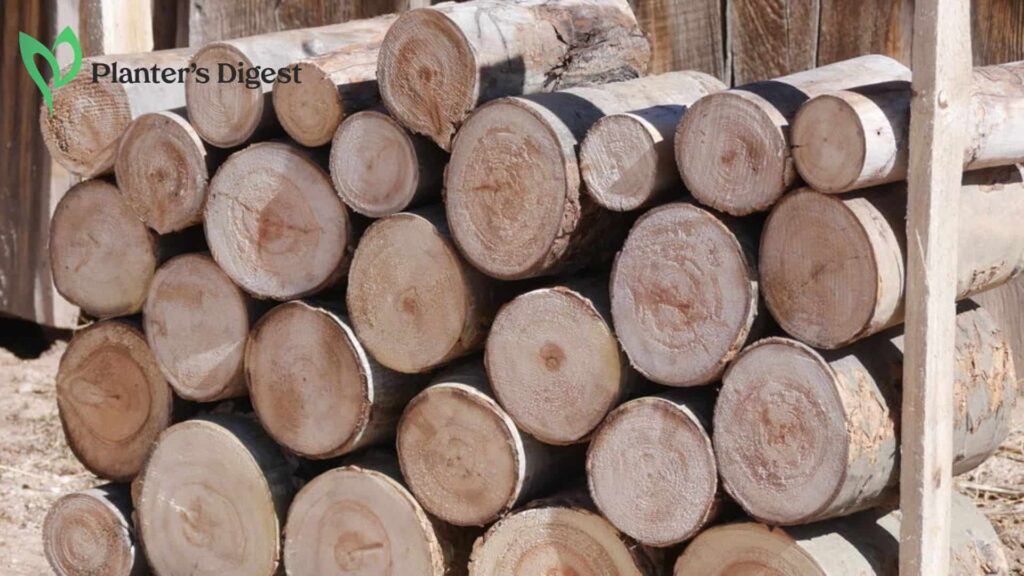
Wondering if you can burn aspen in the chimney during winter or add it to the firepit for a summer cookout? We’ve got the answers you’ve been looking for right here!
In this article, we’ve got a complete guide on everything you need to know about the fire characteristics of aspen and whether it’s good firewood.
To help you decide, we even added a list of pros and cons along with a comprehensive summary table. Now without further ado, let’s hop right in!
Is aspen a good firewood?

While aspen can make a decent fire, it’s a poor choice for firewood as it has a low density and poor coals. Hence, it doesn’t generate heat as well as other hardwoods and will only burn for about 2 hours.
Having said that, aspen isn’t the ideal firewood selection as a primary heat source. Aspen only has a 16.5 million BTU rating, which is considerably inferior compared to other hardwood varieties.
So if you want to effectively warm up your house, you’re better off with other hardwoods like live oak which has 36.6 BTU, eucalyptus which has 24.5, and black birch which has a 26.8 BTU rating.
Given these ratings, aspen doesn’t produce a long-standing fire. It’s also because aspen is a low-density wood that it only burns for about 2 hours before it needs to be refilled.
On the bright side, it’s relatively light which makes it a good firewood option for hiking. We recommend packing just a couple to help get your fire started and refilling the pit with better firewood.
Another pro about aspen is that it doesn’t take very long to season. Compared to other hardwood varieties that can take years to fully season, aspens only take about 6 to 12 months before they’re prepared for burning.
Here’s a general profile of aspen’s characteristics:
| Name | Aspen |
| Heat Content Million BTUs Per Cord | 16.5 |
| Weight Dry – Pounds Per Cord | 2387 |
| Weight Green – Pounds Per Cord | 3655 |
| Heat Production | Low to Moderate |
| Coal Production | Moderate |
| Smoke Production | Low to Moderate |
| Sap Content | Low |
| Creosote Build-up | Low |
| Seasoning Time | 6 to 12 months |
| Splitting Difficulty | Very Easy |
| Smell | Neutral |
What are the types of aspen used as firewood?

Quaking Aspen and Bigtooth Aspen are the most popular varieties used as firewood since they’re easily accessible in the U.S.
While both have a low to middle-grade density and low-level heat output, Bigtooth Aspen is significantly bigger.
| Common Name | Quaking Aspen | Bigtooth Aspen |
| Scientific Name | Populus tremuloides | Populus grandidentata |
| Range | CanadaAlaskaNorth Eastern U.S.North Central U.S. | CanadaNorth Eastern U.S.North Central U.S. |
| Height | 20 to 80 feet | 60 to 80 feet |
| Width | 3 to 10 inches in diameter | 8 to 10 inches in diameter |
| Density | Middle-grade | Middle-grade |
| Heat Level Output | Low | Low |
To be specific, both varieties are widely available in Canada along with the Northeastern and North Central U.S. Though, only the Quaking Aspen is also found in Alaska.
They both have a middle-grade density, which means that they’re light to carry. Hence, they’re a popular choice to bring on a hiking trip since lugging them won’t break your back.

It’s also important to note that because of their density, they only burn for about 2 hours. Thus, we don’t recommend using aspen alone for your firewood as they’ll burn out too quickly.
On the bright side, you don’t have to stress too much about the embers since they’ll be burned to a crisp in a few hours. So they’re good for small and short fires that are good enough for cooking food.
Even then, they have a low-level heat output which doesn’t make them the ideal firewood for cold environments.

As for their size, the Bigtooth Aspen is far larger, growing to about 60 to 80 feet with a diameter of around 8 to 10 inches.
Meanwhile, the Quaking Aspen only reaches heights of about 20 to 80 feet and a diameter of only 3 to 10 inches.
What’s the heat production of aspen wood?

Since aspen has a low- to middle-grade density, it has a low heat production of around 16.5 million BTU per cord, at most. This is below par compared to other hardwood species.
BTU or British Thermal Unit is the measurement for the energy of any kind of firewood wood. Say, 1 BTU is how much energy it’ll take to heat 1 lb of water at 1°F.
So, you’ll want firewood that has a high BTU because this means that it burns for longer and generates more heat. This also means that you won’t have to replace it as often, which is great for lazy winter days or when camping in the wilderness.
Here’s how aspen compares to other varieties of hardwoods found in the East and West:
| Hardwood Species | Heat Content Million BTUs Per Cord |
| Live Oak | 36.6 |
| Eucalyptus | 34.5 |
| Almond | 32.9 |
| Dogwood | 30.4 |
| Oregon White Oak | 28.0 |
| Honey Locust | 26.5 |
| Apple | 25.8 |
| Mulberry | 25.7 |
| Northern Red Oak | 24.0 |
| White Oak | 24.0 |
| Yellow Birch | 21.8 |
| American Elm | 19.5 |
Compared to other hardwood varieties, aspen doesn’t fare too well. Its 16.5 BTU rating means that it doesn’t produce adequate heat or burn for long.
Hence, it isn’t the ideal firewood for when you’d want to keep your home warm during the wintertime.
Though, if you’re simply looking to create a quick fire for the summertime, aspen doesn’t perform too badly.
So if you’ve got a ton of aspen on your property or can buy them for a cheap price, they’re not too shabby for roasting marshmallows or hotdogs.
How long does aspen burn?
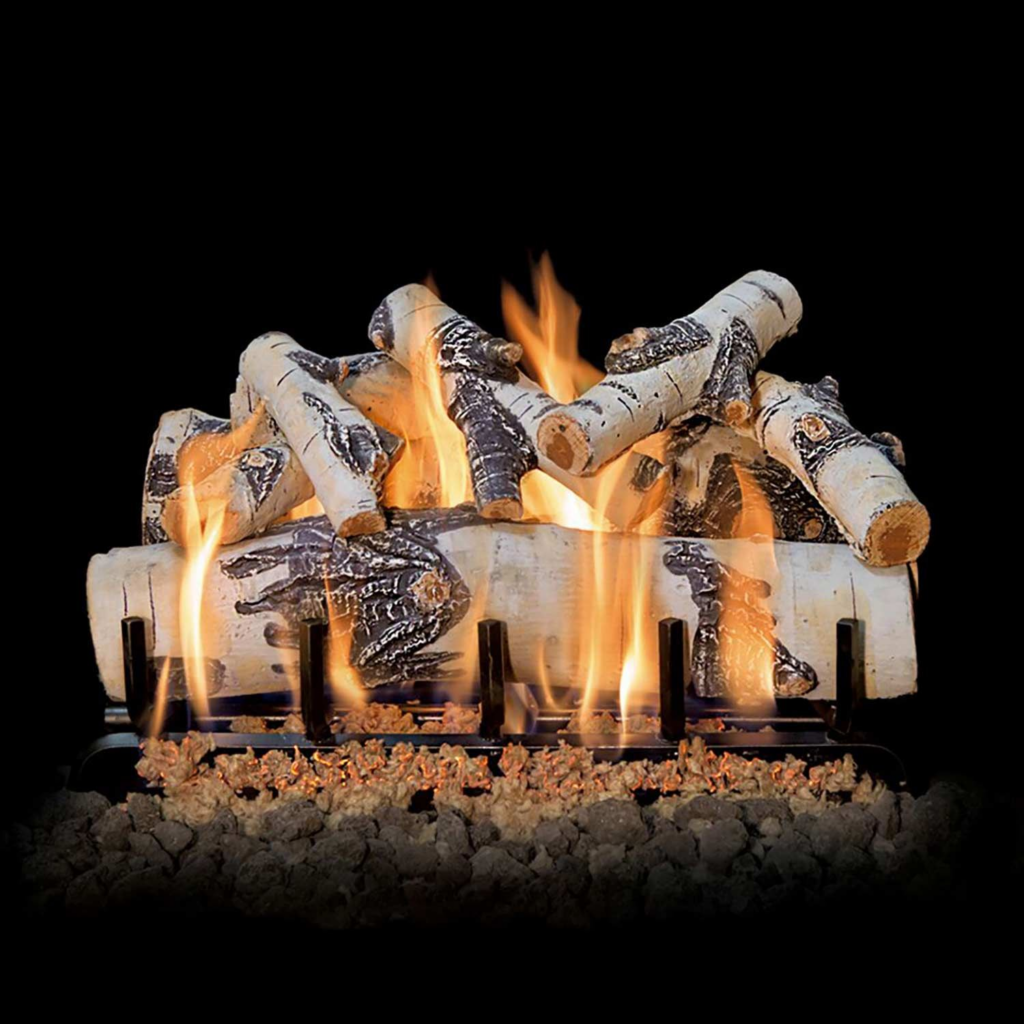
Aspen is a low-density wood that makes poor coals, so it burns only for a couple of hours at most. Hence, you’ll need to keep adding wood every two hours or so to keep the fire alive.
On the bright side, aspen coals stay hot for a reasonable period, which gives you enough time to rebuild a better fire without starting from nothing.
While aspen isn’t the best firewood choice to take along with you when camping, we aren’t entirely against the idea.
Since it’s easy to get aspen burning, it’s a great fire starter. You can simply add other varieties of wood to keep the fire going for longer.
You also don’t have to worry about the embers since the entire log will be burned to a crisp within a few hours.
Even though aspen creates quite large flames, they aren’t aggressive and easily manageable. Hence, they’re perfect for a short cookout while camping.
What’s the smoke production of aspen wood?
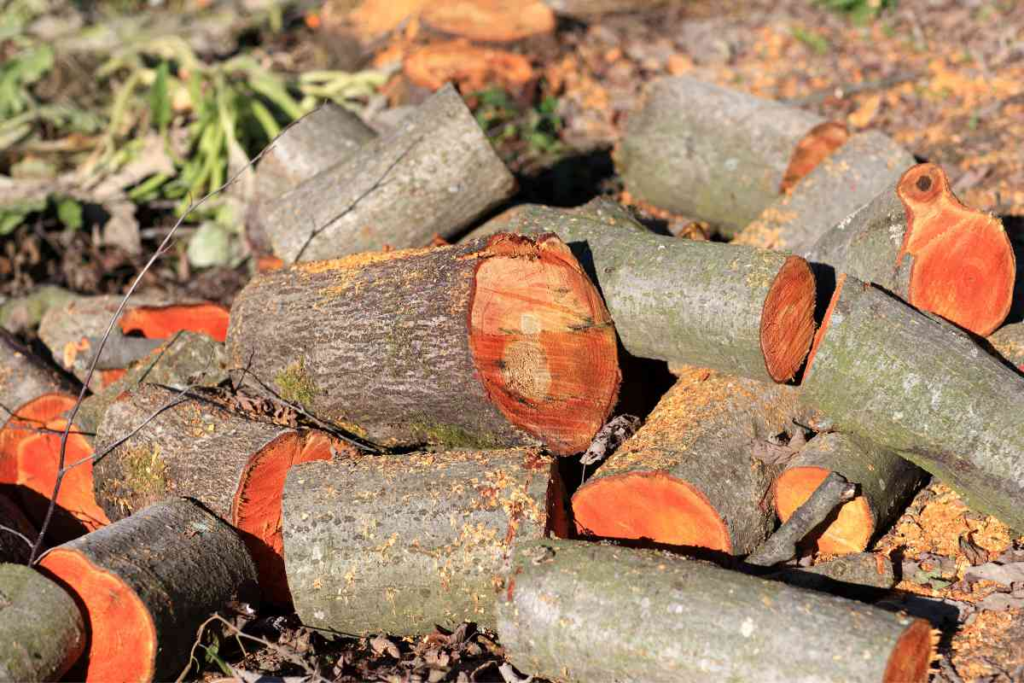
Since aspen has a low sap content, it also has a low smoke production. However, you’ll need to ensure that it’s been properly seasoned, which can take anywhere from 6 to 12 months, before burning due to its high moisture content.
As a result, aspens are considered clean firewood because they’re dry enough to produce minimal amounts of smoke. Hence, they’re ideal for burning indoors.
What’s the creosote buildup of aspen wood?
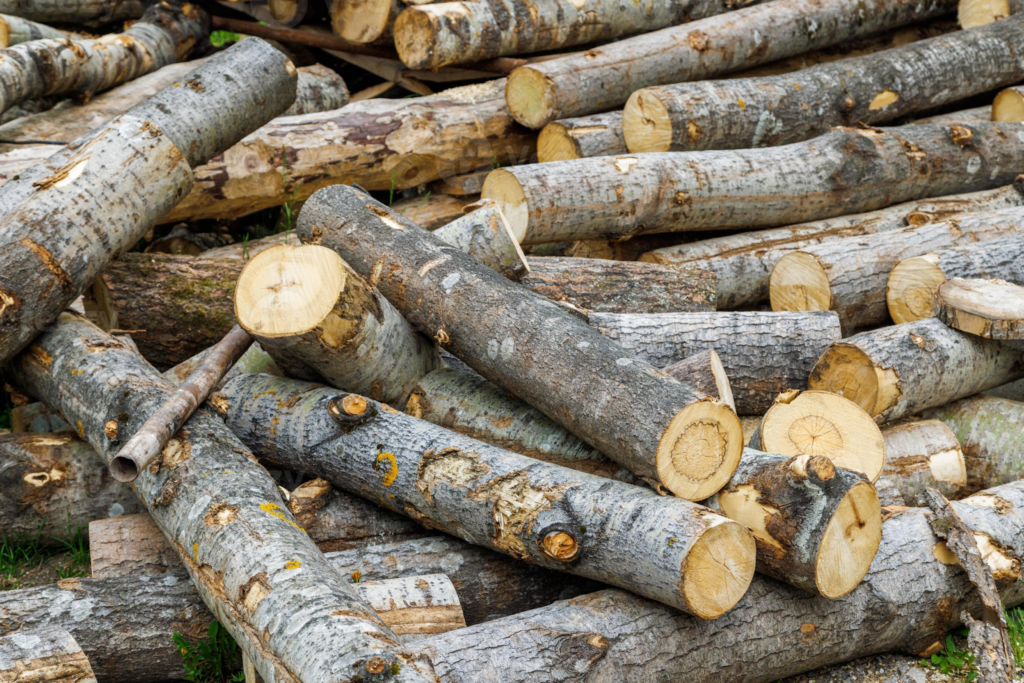
Due to aspen’s low sap content, it doesn’t create a lot of smoke, so you can expect minimal creosote buildup.
Having said that, aspen is a great option for creating chimney fires as it won’t interfere with the air circulation along the chimney walls.
Though as mentioned earlier, aspen isn’t great at producing a lot of heat or burning for long periods.
So if you’re looking for low-maintenance firewood to use in your chimney just for the holiday and winter feels, we think aspen’s a good choice.
What’s the seasoning time of aspen wood?
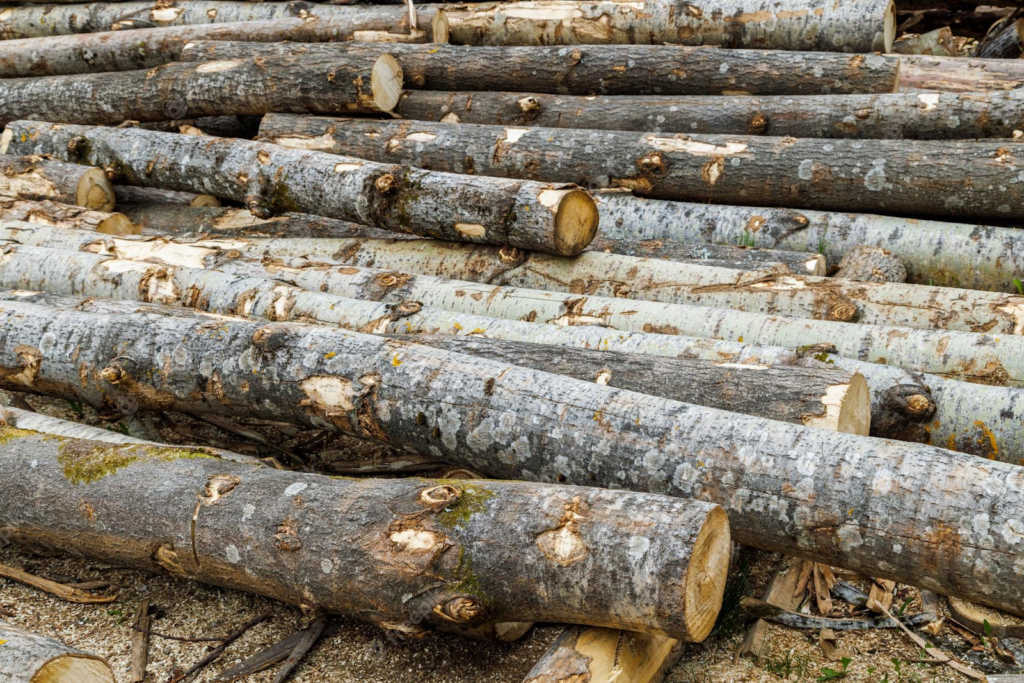
Since aspen has a low sap content, it only takes about 6 to 12 months for it to completely dehydrate before it’s ready to be used.
Compared to most hardwood varieties that can take up to a few years to be fully seasoned, aspen has a rather fast seasoning time.
But here’s the hitch: aspen is prone to rot, which can make seasoning a challenge. You’ll need to keep it in a dry and covered place that’s off the ground.
You’ll also want to check in on your aspen logs every now and then to see if there are any signs of mold or rot.
How easily does aspen wood split?
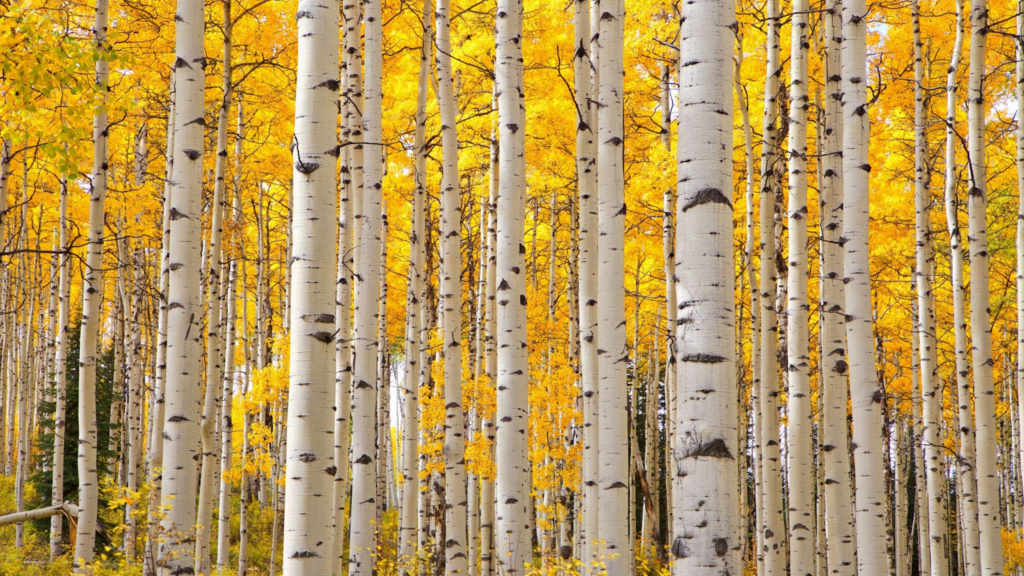
Splitting aspen is very easy thanks to its light density and straight grain. So it’s easy to break in half even when it’s green.
Since it doesn’t have a lot of sap or moisture, you don’t have to worry about creating a mess either. You can expect a nice and clean split from both green and dry aspen wood.
If you’re concerned about its scent, it’s safe to say that aspen has little to no smell when it’s split. If anything, it smells like any other firewood. It also doesn’t really smell like anything when it’s seasoned or burned.
When it’s wet, it has a bit of a smell, but it’s pretty manageable. If you burn green aspen, however, expect it to stink.
What are the pros and cons of using aspen as firewood?

With all of the information laid out, you can still be a bit torn on whether aspen is a good firewood or not.
To prevent you from sitting for hours trying to decide, here’s a breakdown of the pros and cons of using aspen as firewood:
Pros
- It only takes 6 to 12 months to season
- It produces minimal creosote
- It splits easily
- It creates decent coals that are good for restarting fires
Cons
- It has low heat production compared to other hardwood varieties
- It only burns for a few hours
- It’s prone to mold and rot
Is aspen better than other commonly used firewood?

While aspen is easier to prepare, it has a lower heat production and doesn’t burn as long as other hardwood varieties. On the bright side, aspen creates minimal creosote build-up, which is great for indoor fires.
Whether aspen is a good choice for firewood or not ultimately depends on what you’re using it for.
Aspen is great for starting fires because of how easily and quickly it burns. Once you’ve got your fire started, you can add other types of wood to make it last longer.
It’s also great for the fireplace since it creates minimal creosote. Since it’ll only burn for around 2 hours, it’s pretty decent firewood to have burning over a warm Christmas Eve dinner.
Since it’s a lightweight wood, it’s easy to pack during a camping trip. Depending on how long your stay is, you can bring a couple of logs with you just to help start the fire.
We don’t recommend solely relying on aspen if you want your firepit to last the night. You’re better off using the aspen to start the fire, then adding other wood to keep it going.
FAQs
To prevent your firewood from rotting, store it in an area that is clean and dry, elevated from the ground and moisture. For extra protection, you can cover it with a plastic sheet.
The best time to split firewood is in late winter and early spring so that your wood has enough time to season before the following winter.
Depending on the variety and density, it can take anywhere from 6 months to years for your wood to dry completely.
Generally, aspen is one of the cheapest hardwoods available in the market. Even then, the price of aspen can depend on where you’re from and where you’re sourcing the wood.
Since aspen doesn’t produce much smoke or creosote, it can be burned indoors. You can burn it in either your fireplace or a wood-burning oven.
Aspen can be burned outdoors in a pit since it burns pretty clean, which makes it an ideal fuel source for starting fires.




